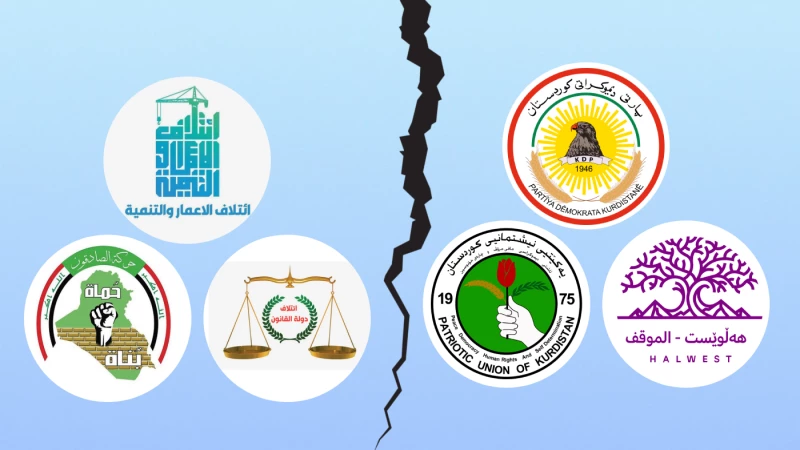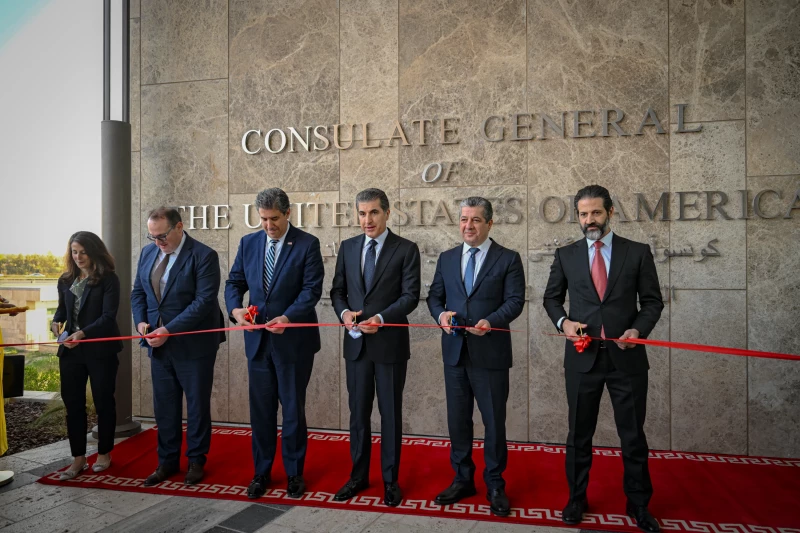Iraq conducted its first population census in 27 years from November 20 to 22, a significant milestone initially planned for 2020 but delayed by the COVID-19 pandemic. Notably, it was the first time in 37 years that the Kurdistan Region participated. The last census, in 1997, excluded the Kurdistan Region as it was outside the Iraqi government's control.
Population censuses are vital for modern governance, providing critical data for policymaking and resource allocation. Iraq’s census went beyond counting individuals and households by collecting data on economic conditions, including household assets like home appliances.
According to preliminary figures announced by federal Prime Minister Mohammed Shia’ al-Sudani, Iraq’s population stands at 45.4 million, with an annual growth rate of 2.3 percent. The Kurdistan Region accounts for 6.3 million, growing at 2.4 percent annually.
This figure excluded “foreigners” in the Region, but it was not clear if the term “foreigners” only applied to refugees, expatriates, or internally displaced persons (IDPs).
Sudani has said the census supports developmental goals. If handled objectively and fairly, the data could certainly help address disparities and guide development across Iraq, marking progress in governance and planning.
In Iraq, a census is far more than a simple enumeration; it is deeply political. The 2024 population census has sparked concerns, particularly among Kurds, reflecting growing anxiety about their position and future in Iraq.
Historical demographic trends are a major issue. In 2009, the Kurdistan Regional Government (KRG) estimated the Region’s population to be 4.66 million, comprising 14.72 percent of Iraq’s total population of 31.66 million, as estimated by the federal Planning Ministry.
These figures were not based on a comprehensive census but other methods. The 2024 census indicates that the Kurdistan Region's population accounts for 14.03 percent of Iraq's total population of 45.4 million. This shows that the Kurdistan Region's population grew by 35.19 percent from 2009 to 2024, significantly lower than Iraq's 43.39 percent growth during the same period.
The decline in the proportion of Kurds in Iraq’s overall population is part of a long-term trend. In 1947, Kurds comprised 20 percent of Iraq’s population, dropping to 18 percent by 1957. However, the 2024 census excluded questions on ethnicity and religious sect, leaving the precise demographic composition unknown.
The KRG opposed including ethnicity due to demographic changes in key provinces such as Kirkuk, Diyala, Nineveh, and Salahaddin. These provinces encompass areas that have experienced decades of ethnic cleansing campaigns, known as Arabization, initiated in the 1960s by successive Iraqi governments.
Despite constitutional provisions mandating the rectification of this longstanding injustice, Arabization remains inadequately addressed and has even resurged in recent years, particularly in Kirkuk.
Since the fall of the Baath regime in 2003, the Kurdistan Region has witnessed an influx of hundreds of thousands of people fleeing violence and instability in other parts of Iraq.
This trend accelerated after 2014 when the Islamic State captured large areas of Iraq. According to the KRG, approximately 750,000 IDPs now reside in the Kurdistan Region, both inside and outside camps.
Deducting this figure from the Kurdistan Region's total population of 6.3 million leaves around 5.5 million, suggesting that the actual population growth of the Kurdistan Region between 2009 and 2024 was about 20 percent—less than half of Iraq's 43.39 percent overall growth.
This overall demographic shift in the number of Kurds in Iraq, driven by inward and outward migration patterns and local and federal demographic engineering, carries significant implications for Kurdish political power.
Article 49 of the Iraqi Constitution allocates one parliamentary seat for every 100,000 people. In the 2021 federal elections, Kurds secured 64 of 329 seats (19.45 percent), with 46 seats from the Kurdistan Region and 18 from Kurdish areas in disputed territories.
However, if the current census is used to determine parliamentary representation, the Kurdistan Region may be allocated only 55 seats, as IDPs are expected to vote in their home provinces. If Kurds from disputed areas, such as Kirkuk, Nineveh, Diyala, and Salahaddin, who live in the Kurdistan Region, are excluded from being considered Kurdistan Region residents, this number could drop to around 50 seats.
In total, Kurdish representation in Baghdad could fall to 75 seats (16.5 percent) or even 70 seats (15.5 percent), significantly lower than the current 19.45 percent.
This decline would likely mark the end of the Kurds’ role as kingmakers in Iraqi politics, especially given the existing political disunity in Kurdish ranks. Even in the most optimistic scenario, with about 80 to 83 seats, Kurdish representation would still drop to 17.6 or 18.2 percent.
A potential silver lining for the Kurdistan Region lies in its share of the federal budget. Based on the 2024 census results, the Kurdistan Region’s allocation should increase from the current 12.67 percent to 13.87 percent, reflecting its population ratio relative to the rest of Iraq. When it comes to the budget, the presence of IDPs benefits Kurdistan by increasing its share through their inclusion in the population count.
However, Baghdad’s frequent politicization and weaponization of the budget against Kurdistan make this increase uncertain. Furthermore, Iraq’s heavy reliance on oil revenues means any drop in oil prices could exacerbate the KRG’s financial struggles.
Demography remains a strategic factor in power and status distribution. To many Kurds, the promise of Iraq has not only failed but now poses an existential threat. Long-term demographic shifts are seen as undermining Kurdish existence, status, and ability to influence their future. Memories of past mistreatment and atrocities, ranging from genocide to systemic discrimination, will only compound reactions to such changes. These concerns will likely shape Kurdish political behavior and deepen distrust toward Baghdad in the years ahead, portending a tumultuous relationship between Kurdistan and Iraq.
The views expressed in this article are those of the writer and do not necessarily represent the position of The New Region



 Facebook
Facebook
 LinkedIn
LinkedIn
 Telegram
Telegram
 X
X


